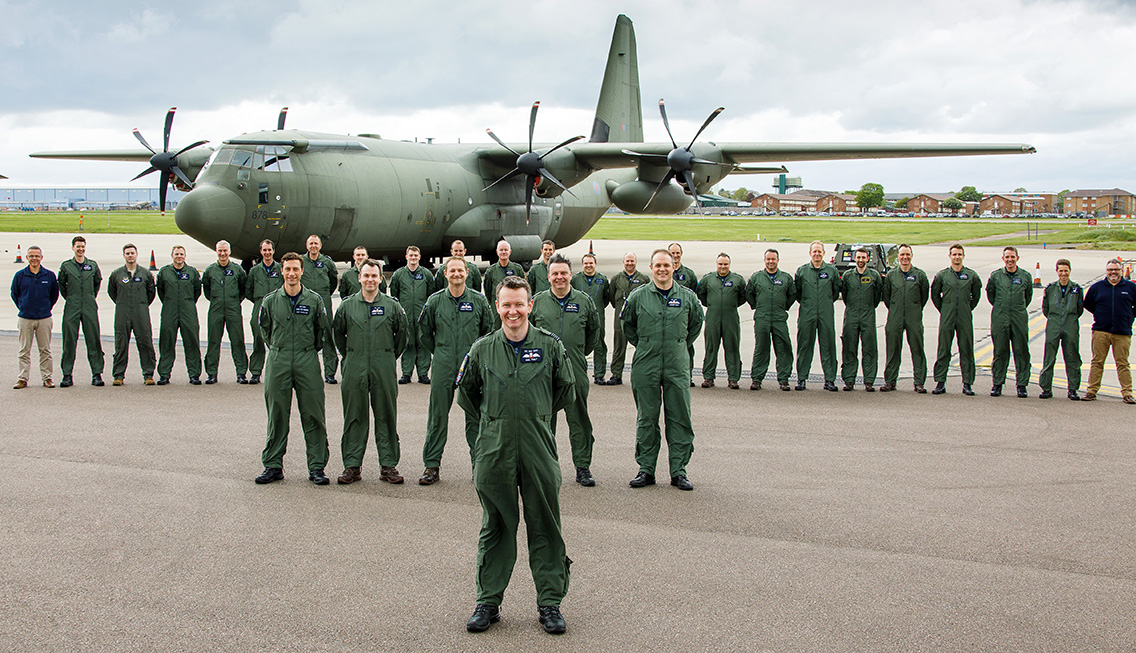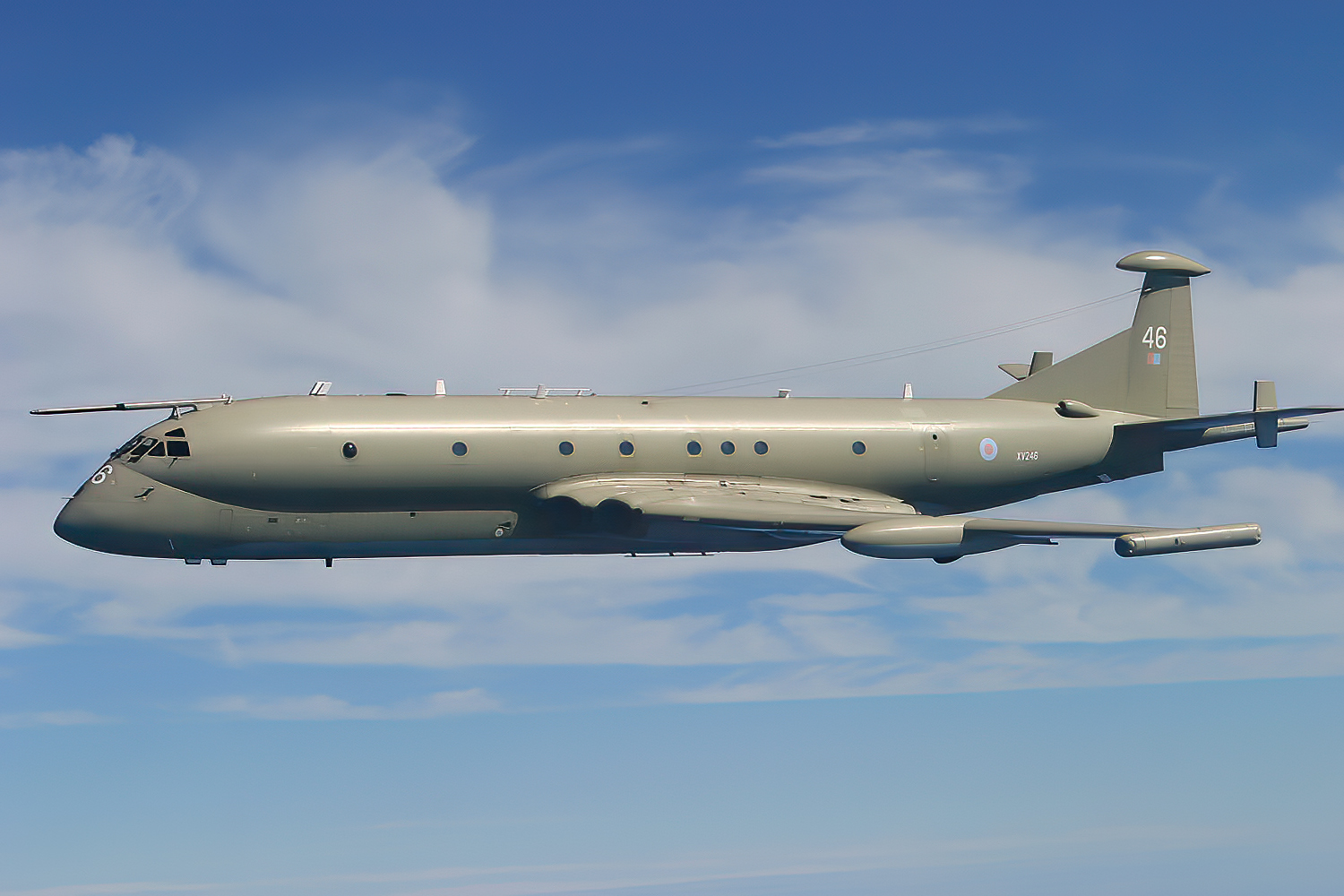The present-day 206 Squadron is based at RAF Brize Norton in Oxfordshire. Part of the Air & Space Warfare Centre, under the command of No 1 Group, the Squadron is responsible for conducting Test & Evaluation (T&E) activities on all of the RAF’s heavy aircraft and training aircraft fleets. Commanded by a Wing Commander Test Pilot, the Squadron comprises of Test Pilots, Evaluator Pilots, Flight Test Engineers and Evaluator Aircrew (Loadmasters), plus a small but essential team of operations and administrative support staff. Its mission covers the full spectrum of T&E from developmental work on new aircraft types to conducting operational and fitness-for-purpose assessments on specific aircraft systems.
Whilst the Squadron has an indigenous ability to plan, execute and report its own flight trials, it also works in partnership with QinetiQ to deliver trials under the auspice of the Aircraft Test & Evaluation Centre (ATEC). Amongst other benefits, the specialist skills and engineering expertise within QinetiQ enable the Squadron to conduct trials which require operating the aircraft outside of its ‘Release to Service’ envelope (that is, beyond the limits to which the normal front line squadrons are permitted to fly the aircraft). On occasion, the Squadron may also partner with other defence industry contractors to deliver combined trials programmes.
Unusually, the Squadron does not have any of its “own” aircraft, or indeed an engineering team to maintain them. Instead, the Squadron “borrows” aircraft front the front line as and when required to conduct flight trials and to keep up the essential flying currency and competency of its crews. This is mostly done on a “chock-to-chock” basis, where the aircraft only “belongs” to the Squadron for the time period between leaving the chocks and taxiing back onto them. Where an aircraft has to be modified for a trial then the Squadron may have sole use of that particular modified airframe until the trial is complete.
As a specialist unit, there are no “ab initio” or junior aircrew on the Squadron (although the Squadron regularly hosts holding officers awaiting flying training courses). The Squadron’s Test Pilots will have had many years of front line experience before being selected, at which point they will undertake an intense 6-12 month training course at one of the recognised Test Pilot Schools, such as the Empire Test Pilots’ School at MOD Boscombe Down or the USAF Test Pilot School at Edwards Air Force Base in California. Depending on the level of course completed, Test Pilot training will qualify them to conduct the full spectrum of test flying up to and including experimental aircraft, and many will maintain currency on multiple different types. Test Pilots are complimented by Evaluator Pilots who, whilst not receiving the same degree of formalised T&E training, are equally experienced aircrew who bring a wealth of recent operational knowledge to the Squadron. Some of the Squadron’s current Evaluator Pilots now have considerable T&E experience in their own right, with many going on to undertake the Test Pilot course. Evaluator Aircrew, or Loadmasters, complete the crew compliment for operating the tactical air mobility aircraft, and really come into their own during trials involving the aerial delivery of troops or loads. Last but not least are the Flight Test Engineers. These are generally RAF Engineering Officers who have undertaken the same Test Pilot School courses and are able to design, co-ordinate, manage and execute airborne trials, and of course write the trials report afterwards! A typical full T&E crew for most trials on an air mobility platform would be comprised of a Test Pilot, Evaluator Pilot, Evaluator Loadmaster and Flight Test Engineer, and the Squadron’s footprint is constructed around this concept. The Squadron is organised into A, B and C Flights.
A Flight is focussed wholly with the Airbus A400M Atlas. 206 Sqn delivered the first RAF Atlas aircraft, named “City of Bristol”, in 2014 and have continued to develop the aircraft’s capabilities ever since. Initially the Squadron concentrated on the basic strategic airlift role and integrating UK-specific equipment and procedures, but focus has now shifted to its tactical capabilities. The Squadron has trialled the aircraft in the low-level environment (both day and night using Night Vision Goggles), for natural surface operations (including beach landings – see video) and the airdropping of stores. In November 2018, the Squadron completed the largest ever stores airdrop from a UK aircraft, with some 23 tonnes being despatched using the Container Delivery System – watch the video here. The aircraft are on a rolling-upgrade programme with new capabilities being added all the time through hardware and software modifications, and the Squadron are intricately involved with the process of handing over / receiving upgraded aircraft from the Airbus facilities in Spain, and the testing of those capabilities before they get released to the front line. 206 Sqn Test Pilots are also embedded with the multi-national trials team that are working at various locations across Europe on future batch upgrades of aircraft, giving the UK early insight and influence on capabilities that may be 3 or 4 years downstream.
B Flight is primarily established for T&E on the venerable C-130J Hercules. In service with the RAF for some 20 years now, after the C-130K for many years before it, it is a mature platform but still continues to evolve. In recent times the Squadron has conducted a variety of trials such as re-evaluating techniques for rough-strip landings, new ways of calculating the release point for high-altitude parachuting and new terrain and obstacle avoidance software for low-level flying. B Flight is also responsible for the C-17, another large mobility aircraft that has been in service with the RAF since the early 2000s. Whilst trials work on this platform has been generally modest, the current focus is on exploiting some of the aircraft’s tactical capabilities, such as parachuting. B Flight have also led the way on the assessment of flight simulators, with new regulations dictating that all simulators should be assessed annually by a Test Pilot to ensure they are adequate for the training tasks
C Flt looks after every other large and training aircraft type and is the area of greatest growth on the Squadron. This includes the remaining Air Mobility fleets, plus the RAF’s Intelligence, Surveillance and Reconnaissance (ISR) aircraft and fixed-wing training aircraft. Recent trials work has included formation and low-level flying in the Phenom (the MOD’s newest multi-engine trainer), cockpit equipment integration on the Shadow, a new transponder system on Voyager and a flight deck instrumentation upgrade evaluation on the Rivet Joint. The Squadron has also recently resumed Hawk flying, after a six-year hiatus, conducting both aircraft hardware upgrade trials on the aircraft itself and providing flying supervision for aircrew equipment (flying clothing) and medical trials carried out by the RAF Centre of Aviation Medicine Flight at MOD Boscombe Down. However, whilst enjoying the privilege of operating so many different aircraft types, the Squadron has never strayed far from it’s maritime history and is now leading the way with trials work on the RAF’s latest aircraft, the P-8A Poseidon. Procured to fill the void left by the cancelled Nimrod MRA4, the Squadron’s Poseidon Test Pilot and supporting Flight Test Engineers have already conducted desktop studies to support the P-8A’s introduction to RAF service, with the first UK flight trials taking place in the autumn of 2020. It is not lost on the Squadron that they will have flown the aircraft ahead of 201 Squadron, which is scheduled to reform as the second Poseidon squadron in 2021!

